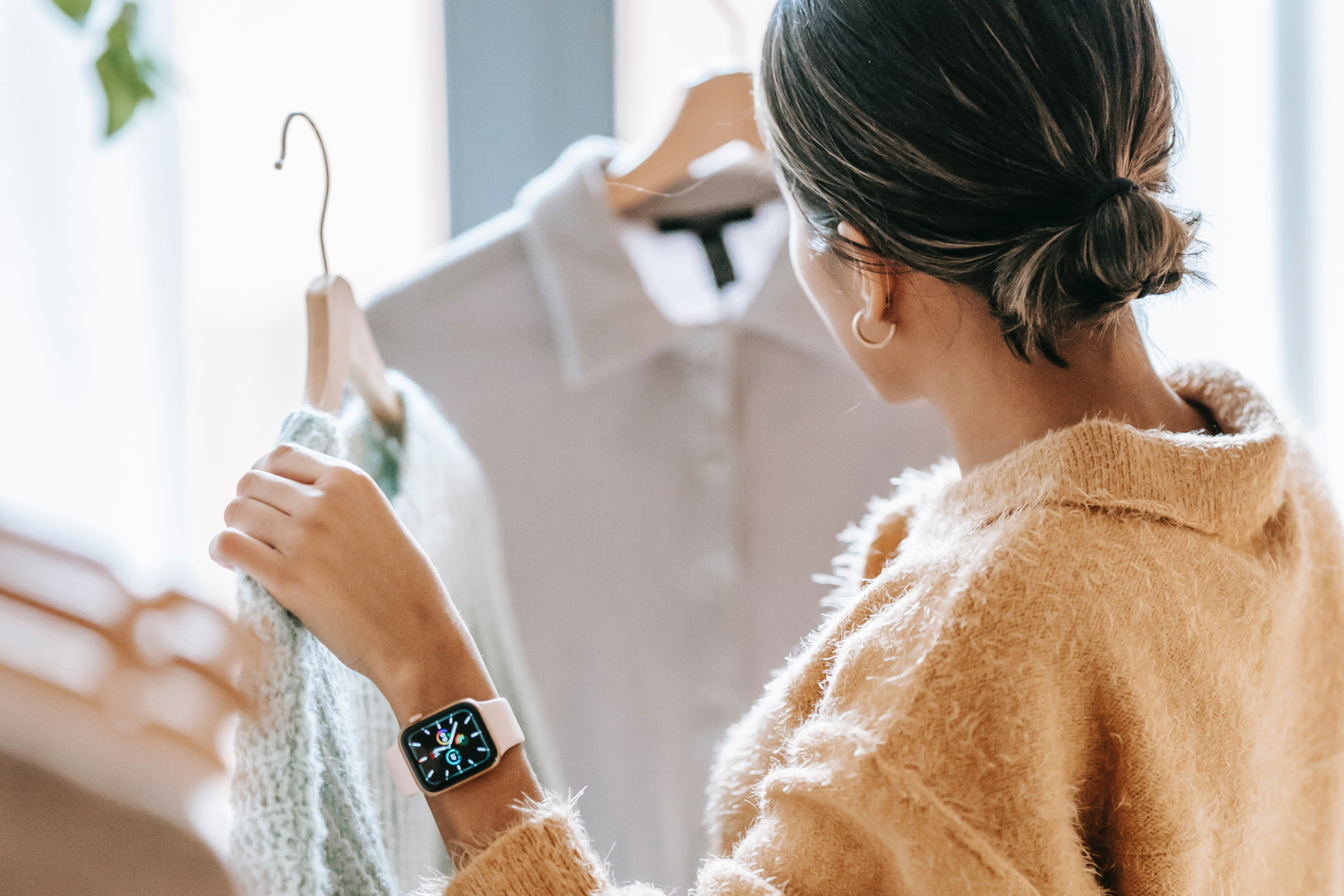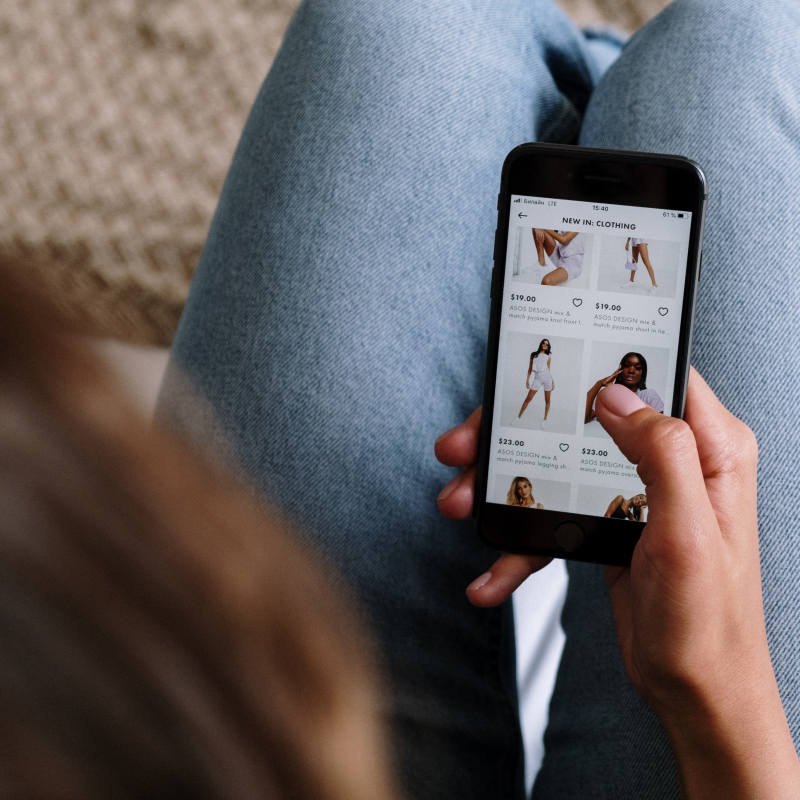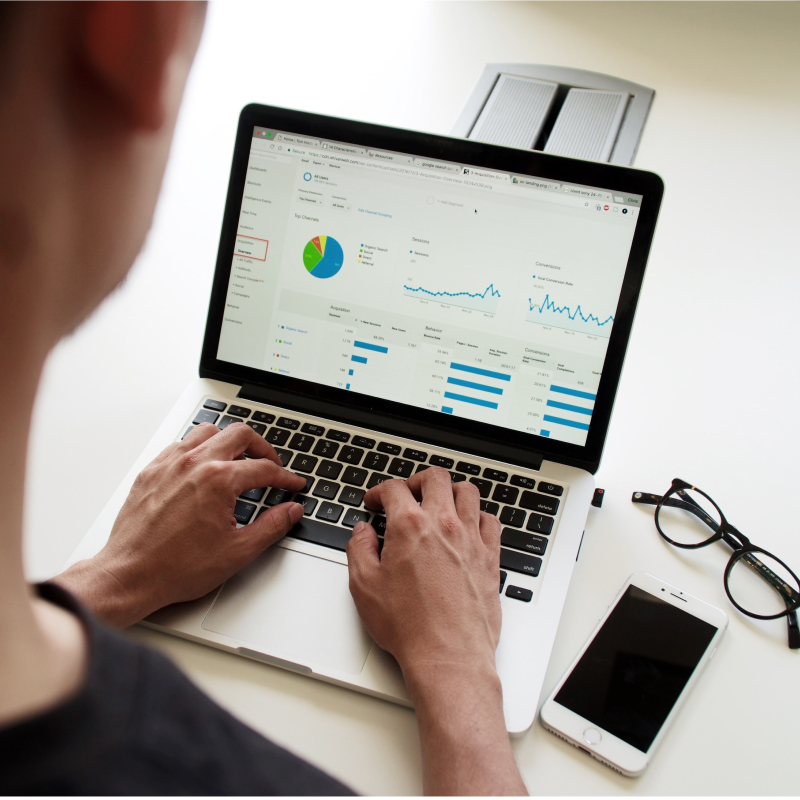5 eCommerce Personalization Tips for Fashion Brands

Quick Summary eCommerce fashion shops have some of the best options when it comes to personalization. Using the right methods for your brand can both elevate the customer experience and boost sales.
Perhaps more than ever before, eCommerce personalization has a significant influence on customer behavior. In fact, 80% of consumers are more likely to go through with a transaction if a brand offers a personalized experience. Customers expect eCommerce sites to incorporate personalized elements like tailored layouts, customized marketing strategies, and product or service offerings based on their individual interests and preferences. As such, this is the optimal time for eCommerce brands to reevaluate how they conduct customer interactions at every level.
This is especially true when it comes to fashion eCommerce brands. Shopping for clothes online comes with one central pain point: consumers can’t try anything on before making a purchase. This can lead to a lot of hesitant buyers and missed sales. Instead of seeing this as a roadblock, you can see this as the perfect opportunity to put your personalization skills to work.
There are plenty of personalization strategies to try out on your own eCommerce site to increase your conversions and meet or exceed customer expectations.
What are the benefits of eCommerce personalization for fashion brands?
Besides conversion rate optimization, fashion brands can use eCommerce personalization to reap the following benefits:
Gain valuable customer data: Many personalization strategies enable you to gather valuable customer data, including their interests, where they are searching from, and what their buying history says about them. You can then use this information to develop more targeted marketing strategies in the future.
Recreate in-store personalization: Shoppers enjoy getting advice and assistance from sales reps in-store, as reps can often find the perfect product for them. Luckily, you can recreate this service by offering features like tailored product recommendations, size and style guides or personalized homepages.
Grow customer loyalty: A visitor that gets an exceptional, personalized experience on an eCommerce site is more likely to come back and make another purchase, which is great news for your brand. In fact, loyal customers spend 67% more on average with companies that offer great service. Even better, repeat customers are more likely to recommend your brand to family and friends, spreading word of mouth.
Avoid information overload: Fashion eCommerce shops that are not personalized often have information overload, promoting clothes or accessories that are of no interest to the shopper. By personalizing a website to meet a visitor's fashion interests, you can increase your chances of making a sale.
Earn a higher ROI: 70% of retailers have reported seeing a 200% or higher return on investment when incorporating personalization on their site.
The following tips and tricks will get you started on your eCommerce personalization journey.
5 tips to offer the best personalized experience
You can implement any of the following tips on your eCommerce site to start seeing the best results of personalization:
1. Enhance product recommendations based on past behavior
The first step to increasing conversion through personalization is by optimizing product recommendations. Amazon is known for its item recommendations, suggesting things to shoppers based on their browsing and purchase history either on the homepage or in a "Customers Who Bought This Item Also Bought" section. It's a highly effective strategy for both boosting sales and increasing customer lifetime value.
Using website cookies to track a user's past website behavior, you can display recommended products on key pages such as the homepage, product page, search page & checkout pages, or through email marketing. For instance, you can create a personalized style guide by listing fashion products that would go well with what a customer has looked at/bought before — perhaps a pair of jeans to go with their shirt. This can help buyers discover new products and increase your average order value.
2. Personalize the homepage for new or returning customers
Your homepage functions much like the entrance to a brick-and-mortar shop. It creates a first impression that can make or break a customer experience. Fortunately, there are plenty of homepage personalization strategies you can use to appeal to new visitors and repeat buyers alike.
You won't be able to tailor a homepage with new customers, as you don't have access to their buying behaviors. However, there's still ample opportunity to pique their interest. Consider featuring some of your "best-sellers" to give new shoppers a starting point for their visit. Alternatively, you can recommend products based on shopper location, commonly referred to as "geotargeting." Another option is to promote real-time content, including products currently on sale or ones that have just been released.
Targeting returning or repeat customers gives you more flexibility as you have the advantage of their browsing or order history to help you personalize the homepage. For example, if a return buyer makes a purchase from a certain section of your site, such as "men's," "women's," or "children's," you can serve them personalized content based on those categories when they come back to your site, cutting down on the time they have to spend navigating. Returning visitors are 3-5X as likely to convert as new visitors, so allowing them to easily pick up where they left off will help increase conversion and create a seamless, personalized experience on your site.
Are you seeing 30% of revenue from Email & SMS Marketing? Let's Discuss.
3. Remind customers of their recently viewed products (via email or push notifications)
Sometimes, a customer views a few products on your site but doesn't buy right away. This type of visitor would be a great target for a reminder email or push notification reminding them of the products they viewed with a call to action prompting them to buy.
You can further incentivize these types of customers by offering time-sensitive and personalized discount vouchers. This could be the motivation that gives them the push they need to go through with a purchase. For instance, you can offer a visitor 10% off their order if they purchase one of their recently viewed items within 24 hours.
This creates a sense of urgency, making the recipient more likely to make a purchase. Even if they decide not to go through with the transaction, you can get them to go back to your site again for further engagement. When they are back on your site, you can recommend products that are similar to what they have already viewed.
4. Entice new customers with popups offering discounts
Perfectly-timed popups are an effective way to build your email list while offering more benefits to your customers. One of the most effective popup strategies is to promise a discount if a visitor enters their email address. This is particularly useful for new visitors to your site. A common popup example might include a line like "Get 10% off your first order," with a space for customers to submit their email addresses.
There are several ways that you can present these popups. For instance, you can display a popup as a small screen, full-screen, side message, or banner. There are advantages and drawbacks to each method. For instance, while a full-screen popup is impossible to miss, some customers might find it very distracting and automatically click out, missing out on the opportunity. On the other hand, others may not see a small, side message notice or mistake it for a "cookies'' notice. You may have to experiment with your popup options to see which works best for your site. We always recommend A/B testing different strategies to find the one that works best for your customers.
Still, many eCommerce sites prefer to display popups only after a customer interacts with the site as this helps avoid any jarring notifications. You can do this by showing them a popup only once they've scrolled down to a designated place on your homepage or have spent a certain amount of time on your site. You can also fire an “Exit Intent” popup with a promotional code to visitors that have browsed your site and attempt to leave. Offering an enticing promotion before they leave your site may entice the user to stay and make a purchase.
5. Personalize push notifications for relevant products
Personalizing push notifications can lead to higher engagement and customer retention if done correctly. Sending too many push notifications to a shopper's phone can cause them to lose interest and turn off notifications from your company. While there is no “correct” amount of notifications you should send, many businesses find success with once-a-week push notifications.
All push notifications should have value, so sending ones that relate to a customer's experience with your site will yield higher open rates. You can send a push notification for relevant products, including incentives like one-time offers, discounts, or promotions.
While the content of a personalized push notification may be similar to what a customer would find in an email, it should be shortened and optimized to display effectively on the recipient's phone. Notifications with cut-off text or images that require a customer to zoom in or out are not effective at generating engagement.
Up your eCommerce fashion game
The modern-day online shopper has come to expect website personalization and a smooth shopping experience. Luckily, you have a variety of ways to meet this demand while increasing your conversion rates. Make use of tools such as browsing or purchase history, website cookies, and customer behavior to target visitors on a more personal level and encourage them to complete a purchase. Personalizing your site will not only allow you to scale your brand and increase your revenue, but will also help increase lifetime value and drive loyal customers back to your site.



